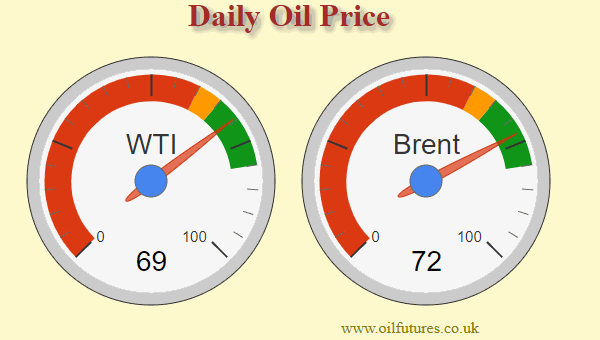Despite the rising demand for crude oil, especially
in the developed world, the rise in price of crude oil has been modest in
recent days.
The API, American Petroleum Institute, for instance,
declared on Tuesday that the weekly draw for the previous week was 5.437
million barrels, 1.534 million barrels more than the figure expected by analysts.
The EIA, US Energy Information Administration, will
release its own data on Wednesday.
The IEA, International Energy Agency, meanwhile,
said that the US oil supply went down by 30 million barrels, when the Gulf
coast was hit by Hurricane Ida – a figure much greater than originally feared.
Not only did it bring down the US crude stocks, but
also brought the figure down at global level, according to the France-based organisation.
Tropical Storm Nicholas, meanwhile, is battering
Louisiana, while causing serious floods and it may dampen the supply activities
in the US again.
In short, there are enough worries about the global
supply; yet, the price of oil does not appear to be responsive in line with
obvious, usual performance pattern.
In light of the surprising development, the only
plausible explanation could be the tendency of the major importers tapping
their strategic oil reserves to curb the rising crude oil prices.
China, for instance, for the first time admitted it
was the case. It even went further by saying the figures will be made public
soon. India has been doing the same. The US was compelled to do it, when
Hurricane Ida brought about supply disruption.
The major global consumers have been asking the oil
producers to increase the production in order to maintain the price of crude at
an affordable level. Of course, they did not ask the producers to sell it at
rock-bottom prices.
On the contrary, the requests were made to mitigate
the inflationary pressure in the respective countries. China, for instance,
admitted the cost of raw materials has skyrocketed in July, causing a major
concern about its economic growth.
The failure to listen to these pleas, especially by
the US, could create unnecessary friction among the members of the OPEC+ too,
unless they are addressed in a reasonable way.
The US has already started moving its air defence
system and Patriotic batteries away from Saudi Arabia without giving a reason,
leaving the latter pretty vulnerable to drone and missile attacks by Houthi
rebels from Yemen.
Iraq, meanwhile, has brought down the price of Basra
Light barrel to $1.15, when the Saudis still sell its own equivalent at $1.35 a
barrel. Analysts are worried over the diversion from the usual collective position
that the two giants of the OPEC+ hold amicably.
Perhaps, in order to address the grievances of its
Asian customers, Saudi Arabia reduced the price of crude oil for Asia by more
than $1.00 two weeks ago.
Of course, the oil producers have a very little room
for manoeuvre in the presence of evolving market conditions, when it comes to
reducing the price of crude oil.
On one hand, they had been suffering for years, when
the price of crude oil plummeted a few years ago and they have to compensate
for those losses at many different layers. On the other hand, their profits are
being capped as never before, because, the importers now resort to moves, which
were unthinkable a few years ago.
The price of crude, however, has been stable for the
past year, though.
In these circumstances, the OPEC+ will be forced to
walk the tight rope in the coming weeks, perhaps before their next monthly
meeting; Saudi Arabia, the de facto leader of the OPEC+, will have an
additional responsibility in holding the members in a cohesive wrap in order to
stop them from straying from common positions.








